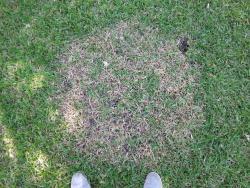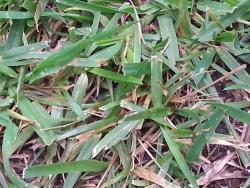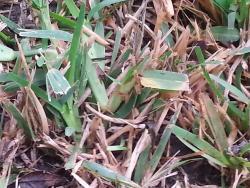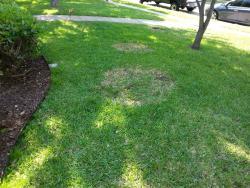Moonhowl said:"Brown patch is strictly a cool weather problem, so do not be confused by brown areas of the lawn that developed during the summer. These were caused primarily by chinch bug damage."
According to the history given above, the lawn was all brown, then the patches became apparent in April and it looks like the grass may already be growing back in. Since I'm not familiar with the climate there, Jean is much closer, I don't know if two weeks or so ago it was spring or summer in Dallas

It certainly wouldn't hurt to do the chinch bug check. My thinking was that if the patches are as circular as they appear then that leans more towards a disease like brown/large patch (Rhizoctonia) whereas chinch bug damage is more irregular. If the night temperatures were below 70F for a time before the patches appeared then that would favour Rhizoctonia on warm-season grasses (I'm familiar with it on cool-season grasses but on those it's easier to identify because of the "smoke ring" on shorter-mown grass). Thatch, overnight watering, and high nitrogen fertilizer favor development of brown/large patch but we don't know if there's a history of that.
If it's from heaped leaves or brown/large patch it should eventually disappear so I agree it may be better to just keep an eye on it. It's quite often difficult to identify turf problems and the wrong call can make things worse.




